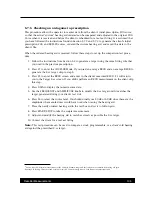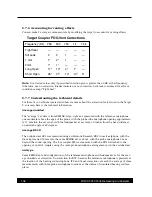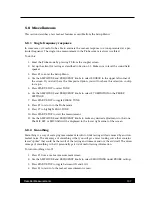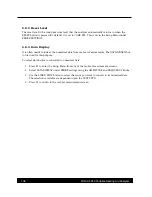
Spectrum Analysis
119
A
PPLICATION
3: R
EAL
E
AR
A
IDED
R
ESPONSE
(REAR)
IN
SPL U
SING
AN
E
XTERNAL
S
OUND
S
OURCE
.
This application is similar to the Insertion Gain test described in Application 2. But instead of mea-
suring real-ear gain you will measure the SPL generated in the ear canal and compare it to the
patient’s HTL and UCL values. This is sometimes known as a “Visible Speech.”
Suggested Procedure:
1. Prepare the sound source.
2. Press F5 from the Main Coupler screen to enter the Probe Mode.
3. Press F4 to enter the Target screen.
4. Follow the instructions from Section 5.2.2 to input the patient’s thresholds. You can also input
the patient’s measured UCL values or predict them by pressing F5. Pressing F5 will also gen-
erate a real-ear target.
5. Press F4 to return to the Probe Mode.
6. Press F2 to select SPL. You should see a graph with the patient’s thresholds, uncomfortable
levels, and real-ear target all in dB SPL.
7. Press F7 to select a source type of COMPOSITE.
8. Use the AMPLITUDE knob to turn the source signal all the way OFF. This will put the ana-
lyzer in Spectrum Analysis Mode.
9. Place the probe tube as close as possible to the eardrum. Marking the probe tube depth at 25-
30 mm should accomplish this is an average adult ear canal. Position client 12” from speaker
at a 45 degree angle.
10. Place the aid in the ear. Turn it on to “use gain.”
11. Press F3 to select AIDED 1.
12. Turn on the external sound source.
13. Press START/STOP to begin spectrum analysis. Then press START/STOP again to freeze the
measurement.
14. Turn off the external sound source. You can repeat this for AIDED 2 and AIDED 3. Note: The
real-ear target depends on the source level of AIDED 2. If you turn the source of AIDED 2 all
the way off to put the analyzer in Spectrum Analysis Mode, you will no longer be able to see
a real-ear target.












































